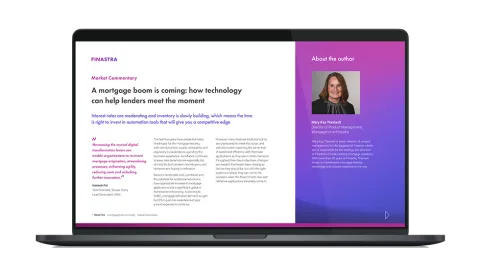Reaping the real benefits of data sharing
Sharing data may be nothing new, but the real benefits it brings to financial institutions, fintechs and their customers are only just beginning to emerge.
As a general business principle, data sharing can be defined as a consent-based approach to providing access to a relevant data set in order to facilitate a transaction or form of commerce. The word ‘consent’ is important since banks and their partners have a responsibility to manage customer data safely and securely, within the bounds of relevant privacy and protection regulations.
For example, if a bank wants to offer its clients a new product or service on top of their existing checking account, such as a budgeting app, then customers will need to give their permission for their data to be shared. The same can be said for a loan application process for small and medium-size enterprises (SMEs), or a cash modelling system offered to corporates. Companies as well as consumers must opt into having their data shared. There are exceptions, notably where anonymised data is shared. An add-on application that enables banks to analyse whole portfolios to uncover the factors that make customers churn could be based on anonymised data, for example.
Benefits for banks and fintechs
Data sharing opens up huge possibilities for banks to offer customers the products and services they want, thereby reducing the risk that consumers or businesses will take their accounts elsewhere. By listening to customers and understanding what would add the most value for them, banks can ‘connect the dots’ by bringing in partners who can provide the right capabilities.
Traditionally, banks have been able to maintain loyal customer bases due to personal relationships established through local retail branches. However, churn rates are on the rise. Fintechs and challenger banks with digital first strategies have picked up significant numbers of new relationships as consumers and businesses seek more desirable products and a better customer experience. The advantage of data sharing is that traditional banks can offer a similar one-stop approach to that delivered by fintechs.
Data sharing enables banks to more effectively serve customers across the lifecycle by providing additional services such as insurance, retail investment, bill payments, cross-border payments and share trading. These services can be offered under one brand, making it easier for consumers and businesses to manage every aspect of their financial lives while creating new revenue streams for the bank.
Data sharing with customers can bring its own benefits, particularly when banks are considering lending to SMEs. By accessing the SME’s balance sheet and order book directly, a bank can build a more accurate, dynamic picture of their fiscal position than using traditional methods such as looking at the past three years’ financial statements. This is not just about partnering with fintechs to add new products and services, but also to add value or security to existing services. For example, a bank could connect with a fintech to automate savings from current or checking accounts, or to enhance security through biometric authentication or in-session fraud monitoring.
By its very nature, the combination of data sharing and digitization create efficiency and accuracy, not just when dealing with customers but internally too, notably by pulling data together from multiple, disparate product-focused systems that don’t normally talk to each other. It also creates new opportunities to use data analytics to understand more about how customers are behaving, when and why they buy products and services, and what they are likely to be looking for in the future. For fintechs, data sharing opens up new markets in the form of banks’ customer bases for their products. Time to market is reduced and income volumes are increased significantly when compared to going solo.
Financial institutions have a trusted relationship with their customers, so any partners they plan to share data with must be carefully investigated and managed within a strict code of governance. That includes ensuring that the partner is using the latest and best technology to tokenise, encrypt and protect sensitive data. All relevant teams within a bank should be involved in this process, including risk, IT infrastructure, security and data governance groups.
A data driven future
The whole world has shifted because of the Covid-19 pandemic. It is impossible to know exactly what the impact of the crisis will have in the coming years. Rapid acceleration of digital enablement, an emphasis on revised risk management practices and policies and optimised customer experiences will be necessary to survive and compete.
New data sharing processes that seemed far away from the norm just a year ago, such as facial recognition in payments, will arrive more quickly than predicted. Preparing for the unknown may be difficult, but financial institutions that embrace fast, secure data sharing and all of the benefits that it brings to customers will be in the best position to adapt to the new market conditions that eventually emerge.



